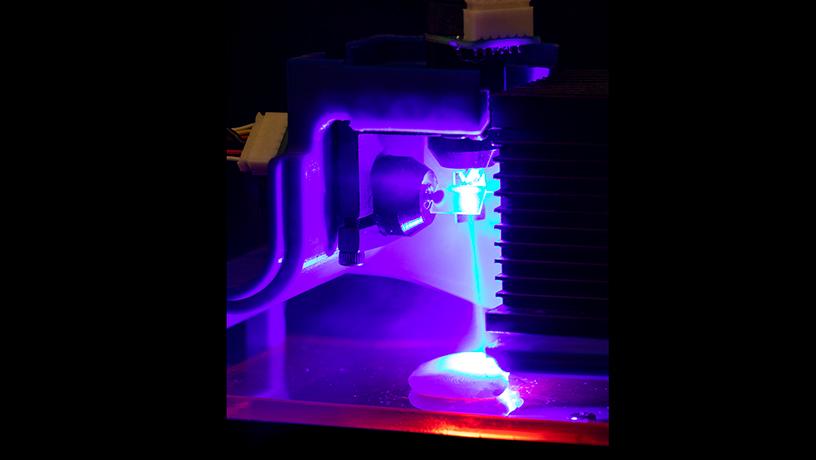3D printing has become hype these days. Companies are printing houses, equipment, food, and whatnot. Now, this branch is extending to make 3D foods more precise and interesting. This technology will make it possible for the 3D-print foods to be turned into millimeter-precise shapes and forms. Researchers and scientists are finding ways to cook food with the help of lasers with accuracy and precision.
The team was headed by a Ph.D. student, Jonathan Blutinger, at Columbia University. The idea started by pureeing raw chicken then extruding it through the nozzle of a 3D food printer, this formed a sample of 3 mm thickness by around one square inch (645 sq mm) in area. The chicken was then heated with the help of blue or near-infrared laser light, at wavelengths of 445 nanometers if it were blue and either 980 nanometers or 10.6 micrometers if it were near-infrared.
The laser was motioned in multiple trochoidal spiral patterns with cooking times that went from five to 14 minutes. Meanwhile, an infrared camera continuously measured the surface temperature of the chicken. At the same time, eight infrared cameras were embedded thermistors to monitor its internal temperature.
It was discovered that the laser-cooked chicken shrank half as much as oven-broiled control samples. Along with this, it gained and held two times more moisture and showed similar “flavor development.” A blind taste test was carried out by two volunteers. In the end, both subjects liked the taste of the chicken that was cooked with lasers more.
“Cooking is essential for nutrition, flavor, and texture development in many foods, and we wondered if we could develop a method with lasers to precisely control these attributes,” says Blutinger. “What we still don’t have is what we call ‘Food CAD,’ sort of the Photoshop of food. We need high-level software that enables people who are not programmers or software developers to design the foods they want. And then we need a place where people can share digital recipes like we share music.”
The research is published in the paper, npj Science of Food.

